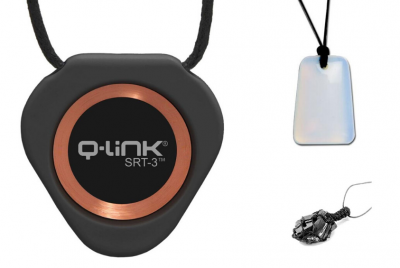When worn correctly, both Bluetooth and wired earbuds offer a lightweight and comfortable way to listen…
EMF Protection For Pets: A Comprehensive Guide

*We may earn a commission for purchases made using our links. Please see our disclosure to learn more.
When tackling your home’s EMF radiation levels, you’ve probably given a great deal of thought to your kids’ rooms and other high-traffic areas of the home. One often overlooked area, however, is how EMF radiation affects our pets.
While there is not a lot of definitive evidence out there, we do know, for example, that consistent exposure to RF-EMF radiation can lead to heart and brain tumors in rats. Indeed, it only stands to reason that if humans can experience negative health effects due to EMF exposure, so can our furry friends. As a pet owner, then, you may be wondering what you can do to keep your four legged best friend safe.
The answer is quite a bit. In this guide, we will take a look at some concrete steps you can take to better protect your pet from EMF exposure.
Minimizing your pet’s exposure
One good thing about minimizing your pet’s EMF exposure is that your pet will benefit from many of the same things you have already done. After all, your home’s overall EMF levels affect them, too. With that in mind, our Whole House EMF Protection Guide has many tips that can get you on the path toward reducing your home’s EMF levels. All of the tips in that article can be used to help keep the whole family — including your pets — safe.
There are a few other things you can do to help minimize your pet’s exposure, as well.
Test your home’s EMF levels
You may have already tested EMF levels around your home as a part of implementing whole-house protection. But if not, this is an excellent place to start. By measuring the EMF levels present, you can get a feel for what problem areas exist and where you need to make changes. You can also monitor the levels before and after implementing a change, to be sure it’s working.
If you haven’t already done so, grab an EMF meter and start measuring (and if you don’t already have a meter, see our guide to the Best EMF Meters For Any Budget). Since we are specifically talking about pet EMF protection here, take special care to check the levels in any areas where your pet frequents — their bed, feeding area, litter box, the fish tank, etc.
Watch where they eat
For many of us, we put our pets’ food bowls wherever it is convenient and we have the space. That is not always the best option, however. If you have a smart fridge, for example, and you put your dog’s food dish right next to the fridge, they are going to be exposed to higher levels of EMF radiation while they eat. Likewise, if your cat gets their morning wet food by the interior wall that your smart meter backs up to, that is also not ideal.
Try and keep your pets’ food dishes away from electronics and any other sources of EMF radiation. If you have a pet that lives in a cage, such as a rabbit or guinea pig, make sure their cage in general is not in one of these high-EMF locations.
Place their bed somewhere safe
The average cat sleeps between 12 and 16 hours per day, depending on age and other factors. A dog sleeps a similarly impressive amount — between 12 and 14 hours, daily. Indeed, many of our pets are content to simply sleep the whole day away (and run around like a maniac at night, but that’s another thing entirely).
Because your pet spends so much of their day snoozing, make sure they are doing it in a good place. If your dog or cat has a go-to bed where they spend most of their time, keep it away from your computer, WiFi router, TV, and any other electronics. Use your EMF meter to make sure the location you choose is as low in EMF radiation as possible. Whether you’re a dog, cat, or a human, sleep is a very necessary and restorative time, and it’s important to make the most of it.
Be mindful of litter box placement
Your cat may not spend a huge amount of its day in the litter box, but it is still an area that it comes back to, again and again. Not to mention, you also likely spend some time in the area, scooping and cleaning the litter.
With that in mind, take care not to place the litter box in an EMF hotspot. This may be a challenge, as many of us prefer to keep litter boxes outside of sight (and smell range) as much as possible. You simply may not be able to find a spot that is low EMF and as unobtrusive as you want it to be. It’s still worth trying, however.
Keep Fluffy away from your laptop and other warm electronics
If you have a cat, there’s a good chance you have figured out by now that they like warm things. Next to heating vents, burrowed up in car engines, or curled up on a human lap — these are all common places for cats to nap.
If you have a laptop, you may even notice that when you break it out, your cat comes running. Laptops generate quite a bit of heat, and if your cat has figured that out, they likely try to capitalize on it whenever they can. And while it may be cute, this also exposes them to potentially high levels of EMF radiation. Try and discourage your cat from snuggling up to electronic devices whenever possible.
Steer clear of wireless fences
If you don’t have a fence and you prefer the look of a wide open yard, you may have some issues when it comes to letting your dog outside. Many owners get around this by installing an invisible fence. These fences usually require your dog to wear a special collar. The fence sends out a signal, and when the collared dog tries to go past the fence’s boundaries, the fence’s wireless signal causes the collar to react, usually shocking the dog.
This can certainly discourage Fido from leaving your yard. But, as it involves a wireless signal, it may also expose them to more EMF radiation than is safe. If you need a fence and are worried about your dog’s EMF exposure, you may want to opt for real over invisible.
Find a technology-free collar
On that same note, your dog’s collar could be problematic, as well. In the invisible fence example, the collar received a wireless signal that prompted a response. That means the wireless radiation is in close proximity to your dog’s neck. As you may know, the inverse square law states that radiation exposure is higher the closer you are to the source, and dogs are no exception to this rule.
A basic dog collar is a much better option. Pair it with tags stating how to contact you, and that is really all you need.
Line their crate with protective fabric
This is a good tip for pets who live in cages, as well as for your dog or cat’s crate, assuming they spend time in it often. Find a protective fabric, such as Titan RF Faraday Fabric from Mission Darkness. Or, if you want to let sunlight in, you could get a protective mesh, such as Blocsilver’s EMF Protection Fabric.
Line the outside of your pet’s cage or crate with the fabric. If you are worried about them chewing it, put another layer of regular fabric between the crate and the protective fabric to create a buffer. You can either leave the front section of the cage uncovered, or create a makeshift door by rolling the fabric up. For full protection, simply roll the fabric down and your pet will be shielded from all angles of EMF radiation.
Try a protective pet jacket
Some pets absolutely adore a good sweater or jacket, while others may stop at nothing to get the clothing off of them. If your pet is the type to tolerate clothing well, you could also invest in a protective pet jacket.
Less EMF makes a small-sized pet jacket intended for cats and dogs under 10 pounds. The jacket is easily washable and closes with a simple velcro fastener on the chest. A protective jacket is an excellent option if certain high-EMF areas are unavoidable for your pet.
Protective tent beds
If your pet uses a bed to sleep, they may be receptive to a protective tent bed. These are essentially a little tent made from durable, EMF protective fabric. The door parts down the middle to create two flaps that your pet can easily get in and out of, and the addition of a pillow inside creates a sleeping space that is dark and comfortable.
Less EMF makes a protective pet tent bed for smaller dogs and cats, up to 12 pounds. They use Staticot fabric in their bed, resulting in a tent that is durable and washable, as well as RF-EMF protective.
Parting thoughts
Your pet is a part of the family, and it’s natural to want to keep them safe from EMF radiation, too. The steps on this list can all help reduce your pet’s overall EMF exposure.



